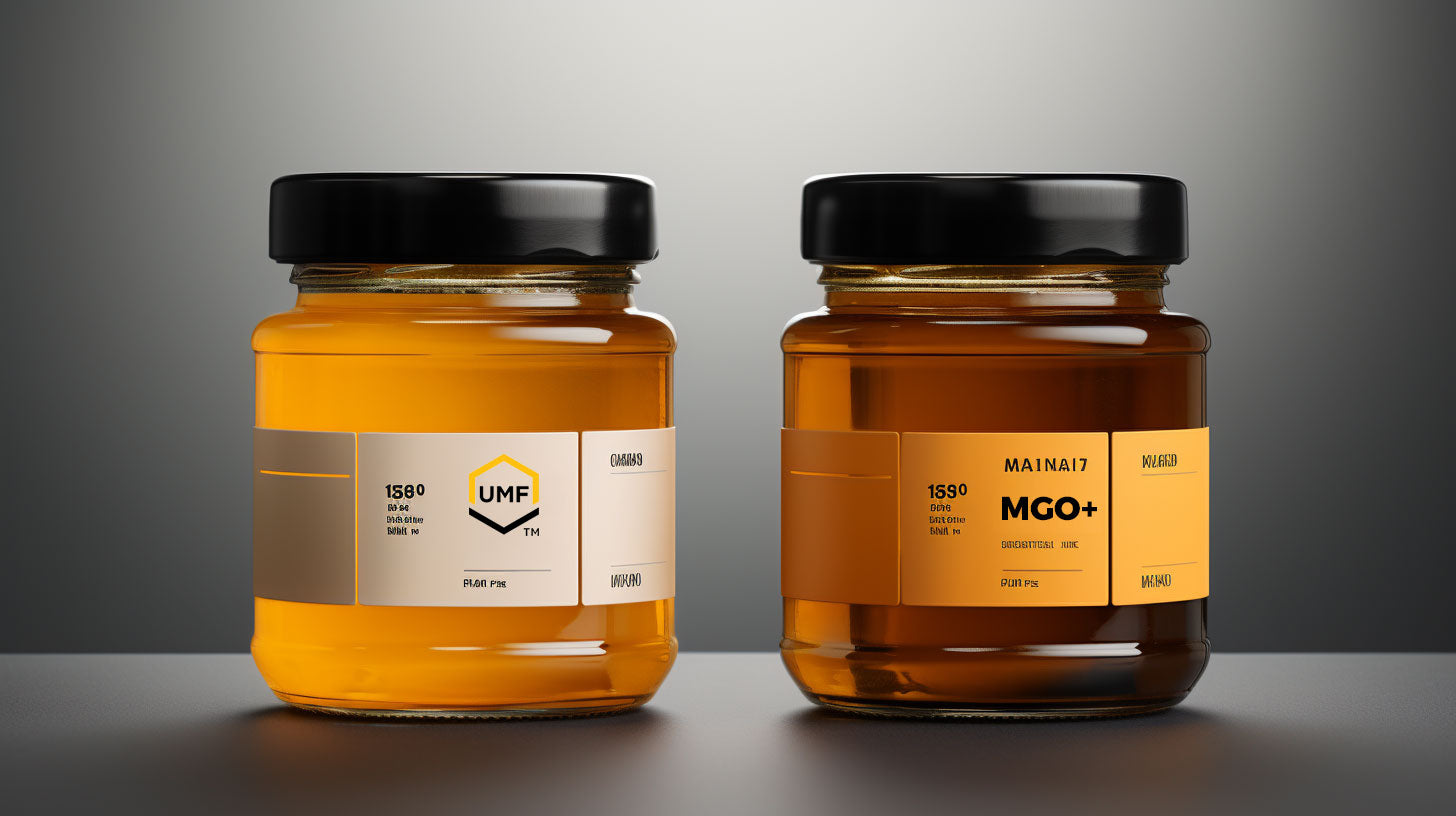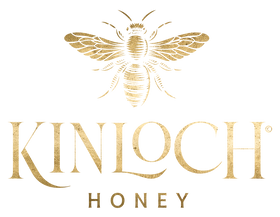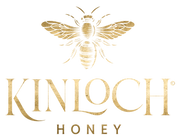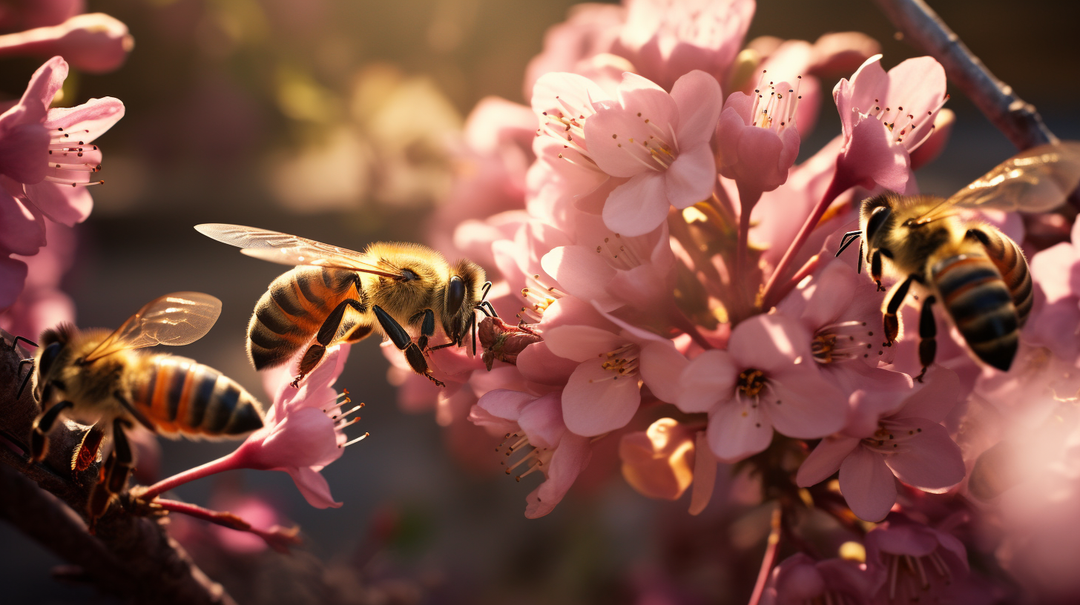Mānuka honey UMF vs MGO: What's the difference?

'An apple a day keeps the doctor away,' they say. But what if I told you that there is a sweet, golden elixir that could do even more? Enter mānuka honey, a powerhouse of health benefits.
In the world of Mānuka honey, there are two main rating systems that determine its quality and potency: UMF and MGO. These ratings are like the secret codes to unlocking the full potential of this extraordinary honey. The UMF rating system measures the unique Mānuka factor, while the MGO rating system quantifies the level of methylglyoxal, a key component in Mānuka honey's healing properties.
But which one should you choose? Don't worry - we're here to help. In this article, we'll review the differences between UMF and MGO and guide you in selecting the best Mānuka honey for your needs. Kinloch Honey can produce Mānuka honey to both rating specifications.
So, grab a spoon and get ready to indulge in the sweet world of Mānuka honey.
Mānuka Honey Ratings Overview
Let's dive into the world of Mānuka honey and discover all the amazing benefits it has to offer!
One important aspect to consider is the difference between UMF (Unique Mānuka Factor) and MGO (Methylglyoxal) ratings. UMF is a grading system that measures the presence of certain compounds in the honey, indicating its potency and quality. On the other hand, MGO measures the concentration of methylglyoxal, which is believed to be one of the key components responsible for the honey's antibacterial properties.
Both UMF and MGO ratings are important factors to consider when choosing Mānuka honey, as they provide information about its authenticity and potency. So, whether you're looking for a specific UMF or MGO rating, Kinloch honey offers a wide range of options to suit your needs.
MGO Rating System
The MGO rating system measures the level of methylglyoxal, a compound found in Mānuka honey that's responsible for its unique properties. This rating system provides a direct measure of the honey's potency and effectiveness. The higher the MGO rating, the higher the concentration of methylglyoxal, indicating a more potent honey.

UMF Rating System
The UMF rating system stands for Unique Mānuka Factor and is a globally recognized standard for grading the potency of mānuka honey.
Unlike the MGO rating system, which solely measures the level of methylglyoxal, the UMF rating system takes into account multiple markers. These markers include the presence of leptosperin and dihydroxyacetone. This ensures a more accurate evaluation of the honey's unique properties and benefits.
The UMF rating system ranges from UMF 5+ to UMF 20+, with higher numbers indicating a higher concentration of beneficial compounds. So, if you're looking for a more comprehensive approach to assess the quality of your mānuka honey, the UMF rating system is the way to go. The UMF rating system is more expensive for manufacturers to adhere to as there are higher compliance and testing costs and a licence.
Choosing Mānuka Honey
Ultimately, the choice between Mānuka honey UMF and MGO depends on your personal preference, both ratings are heavily vetted and respected but UMF does have a more premium perception as the gold standard of the 2 rating systems. UMF rated products also tend to carry a higher price tag.
Buying Mānuka Honey
When purchasing this golden elixir, make sure to keep an eye out for authenticity and quality markers as not all honey is created equally.
It's also advisable to buy from reputable brands or certified suppliers to guarantee you're purchasing a high-quality product and not a cheap knock-off!
New Zealand Origin
Immerse yourself in the rich heritage of New Zealand, the birthplace of this extraordinary elixir that possesses the power to transform your health and well-being beyond imagination.
When it comes to Mānuka honey, the origin is of utmost importance. New Zealand, with its pristine landscapes and unique flora, provides the ideal environment for the production of this exceptional honey. The native Mānuka tree, found only in New Zealand, is the source of the nectar that gives Mānuka honey its remarkable properties.
The country's strict regulations ensure that the honey is pure and authentic, guaranteeing its quality and potency. This is why Mānuka honey from Kinloch Honey is highly sought after worldwide.
Medical Grade Mānuka
Very high UMF/MGO manuka honey is classified as a medical grade product. Any Mānuka honey UMF10 or higher is considered medical grade.
Bioactive Properties
The bioactive properties of high-quality Mānuka honey contribute to its remarkable healing abilities, such as its ability to promote wound healing. For instance, a study conducted on patients with chronic leg ulcers found that regular application of Mānuka honey resulted in significantly faster healing rates compared to standard treatments.
These bioactive properties are what set Mānuka honey apart from other types of honey.
However, regardless of the grading system used, Mānuka honey's bioactive properties make it a powerful natural remedy for various health conditions.
KFactor and Mānuka Honey
Not as commong as the other two rating systems KFactor measures the purity of Mānuka honey by analyzing the pollen content. The higher the KFactor, the higher the purity of the honey. It ensures that the honey is made mostly from the nectar of the Mānuka flower (monofloral honey), providing you with all the natural benefits.
KFactor focuses on the purity and origin of the honey.
Conclusion
So, now you know the difference between UMF and MGO rating systems when it comes to mānuka honey. Armed with this knowledge, you can confidently choose the right honey for your needs.
Remember, just like a bee painstakingly selects nectar from flowers, you must carefully select your Mānuka honey to ensure a high quality product.




